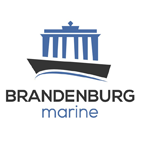Operators on hazardous containerized cargo leakage and presents key measures to prevent these situations from escaping control.
As informed, Gard continues to see concerning cases of leakage from hazardous containerized cargoes – incidents which can quickly escalate into serious safety and environmental threats. Ensuring that crew and company personnel ashore understand the importance of swift action is essential to prevent these situations from spiralling out of control. Thus, Gard recommends the following measures:
- Immediate access to IMDG cargo information onboard
The ship should have onboard immediate access to all IMDG cargo information, including stow location, DG manifest, packing list, Material Safety Data sheets, and emergency contact numbers. The container should also be placard in accordance with the Code. This information will be needed when the ship seeks expert advice on what immediate measures can be taken by the crew with the protective equipment they have onboard, such as breathing apparatuses and chemical suits.
- Spillage response and water usage
The IMDG Code generally recommends washing spills on deck overboard with plenty of water. If the substance reacts dangerously with water, this should be done from as far away as possible. It may be safer to rig a fire hose from upwind so that the crew do not have to hold it directly. Care should also be taken to avoid washing the substance into the hold through the hatch covers.
- Safety assessment and cargo leak investigation
The crew’s safety must be assessed before investigating a cargo leak, especially if entering an enclosed space is required. In some cases, inert absorbent can be used to contain seepage under deck. If the leak spreads to other cargo – especially other dangerous goods – the situation can quickly become more serious and may require expert assistance. In the case of Nitric acid, watch for pale yellow to reddish-brown fumes, which are a sign it is reacting with other materials.
- Decision-making during a leak at sea
If the vessel is at sea when the leak is discovered, the crew may need to quickly decide whether to divert to a place where the situation can be contained and the container removed. Charterers may be able to help coordinate with the terminal, and even if the terminal has no dedicated hazmat facilities, portable containment equipment can usually be brought in.
- Communication and coordination with authorities and stakeholders
Clear communication between owners, charters, and authorities is essential to build trust. Authorities may also require a recognized expert contractor with a clear and comprehensive plan to handle the situation. If a port is reluctant to help, flag state assistance may be needed, along with reference to IMO Place of Refuge guidelines.



